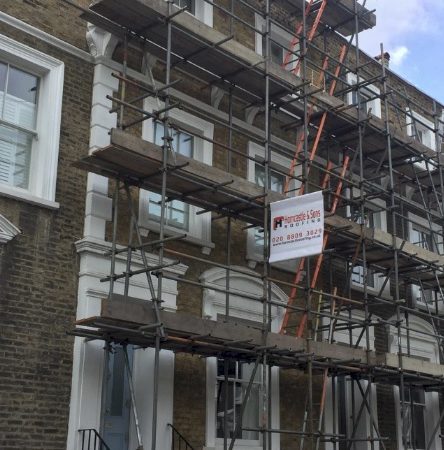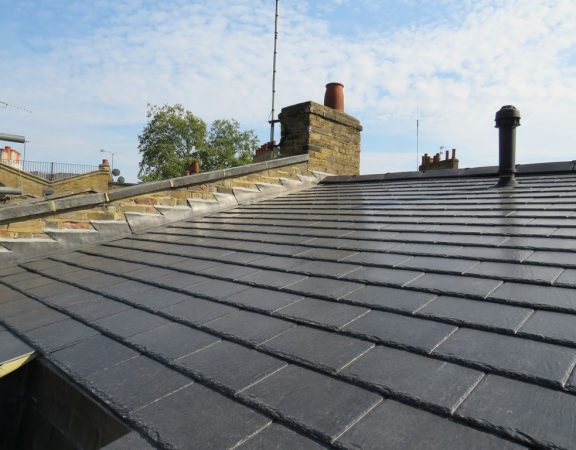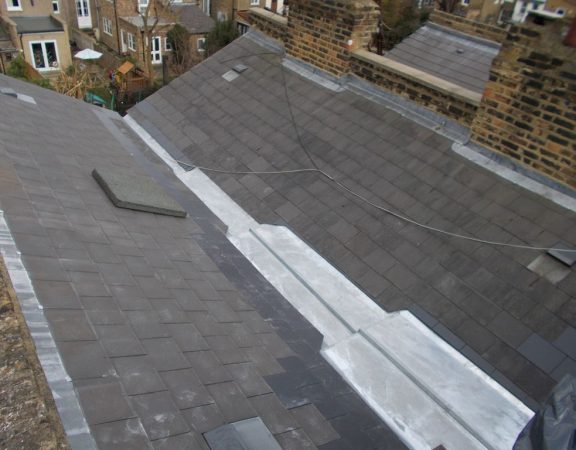Understanding Pointing and Repointing: Why Your Walls and Chimney Need This Essential Maintenance
When you look at any brick or stone building, you’ll notice lines of material filling the gaps between each brick or stone. This material is called pointing, and it plays a much more important role than most homeowners realize. Understanding what pointing does and when it needs attention can save you from costly repairs and potential safety issues.
What is Pointing?
Pointing refers to the mortar finish that fills the joints between bricks or stones in your walls and chimney stack. Think of it as the glue that holds everything together while also providing a neat, finished appearance. This mortar serves multiple purposes: it keeps the structure stable, prevents water from getting inside your walls, and allows your building to breathe properly.
The pointing you see on the outside of your building isn’t just decorative – it’s your property’s first line of defense against weather damage. When pointing is in good condition, it creates a protective barrier that keeps rain, snow, and wind from penetrating your walls.
Why Does Pointing Deteriorate?
Over time, weather conditions take their toll on pointing. Rain, frost, wind, and temperature changes gradually wear away the mortar, creating small cracks and gaps. This process is completely natural and happens to all buildings, but it means regular maintenance is essential.
When pointing starts to fail, you’ll notice visible spaces or cavities where the mortar used to be. These gaps might seem small, but they can cause serious problems. Water can seep through these openings, leading to dampness inside your walls, damage to internal structures, and even structural instability over time.
Winter weather is particularly harsh on pointing. When water gets into small cracks and then freezes, it expands and makes the cracks bigger. This freeze-thaw cycle can quickly turn minor pointing issues into major problems that require extensive Roofing repair work.
The Importance of Proper Materials and Techniques
Not all mortar is the same, and using the wrong type can cause more harm than good. Walls need to “breathe” – they need air circulation to stay healthy and dry. If someone uses modern cement-based mortar on an old building that was originally built with lime mortar, it can trap moisture and cause the bricks to deteriorate rapidly.
Professional Roofing Services in London understand the importance of matching the original mortar type and strength. Older buildings typically used softer lime mortars that allowed flexibility and breathability. Using harder modern mortars on these buildings can cause the bricks themselves to crack and crumble.
The skill of the person doing the work also matters enormously. Proper repointing requires removing old mortar to the right depth, preparing the surface correctly, and applying new mortar with the right technique and timing.
Different Pointing Styles
There are several ways to finish pointing, each with its own advantages:
- Flush Pointing: The mortar comes right to the edge of the brick face, creating a smooth, continuous surface. This style works well in sheltered locations but may not be the best choice for areas exposed to driving rain.
- Bucket Handle: The mortar is shaped in a gentle curve that sits slightly back from the brick face. This curved profile helps water run off more effectively and is popular for its neat appearance.
- Weather Struck: This style starts close to the bottom edge of the lower brick and slopes back as it rises toward the upper brick. The sloping surface helps shed water very effectively, making it ideal for exposed walls.
- Recessed: The mortar sits back from the face of the bricks, creating shadow lines that can look very attractive. This style also helps water drain away from the wall surface.
When to Consider Repointing
Regular inspection of your pointing is important, especially after harsh weather conditions. Look for signs like crumbling mortar, visible gaps between bricks, or white staining on the wall surface (which indicates water penetration).
In areas like Islington, Highgate, and Haringey, where many properties are older Victorian and Edwardian buildings, pointing maintenance is particularly important. These historic properties were built with traditional materials that require sympathetic maintenance to preserve their character and structural integrity.
If you notice pointing problems, don’t delay in getting professional advice. Horncastle & Sons Roofing has extensive experience working with properties throughout North London, understanding the specific challenges that local buildings face.
The Consequences of Neglect
While pointing problems might seem like purely cosmetic issues, they’re actually critical structural concerns. Poor pointing can lead to water ingress, which causes dampness, mold growth, and deterioration of internal walls and timbers.
In severe cases, neglected pointing can compromise the stability of entire walls or chimney stacks. What starts as a small maintenance job can become a major reconstruction project if left too long. Some walls may even need to be partially or completely rebuilt if the pointing failure has been extensive.
Professional Assessment and Repair
Repointing is skilled work that requires proper tools, materials, and techniques. A professional assessment can determine the extent of work needed and ensure the right approach for your specific building type and age.
Quality repointing work should last for decades when done correctly, making it a worthwhile investment in your property’s long-term health and value.






